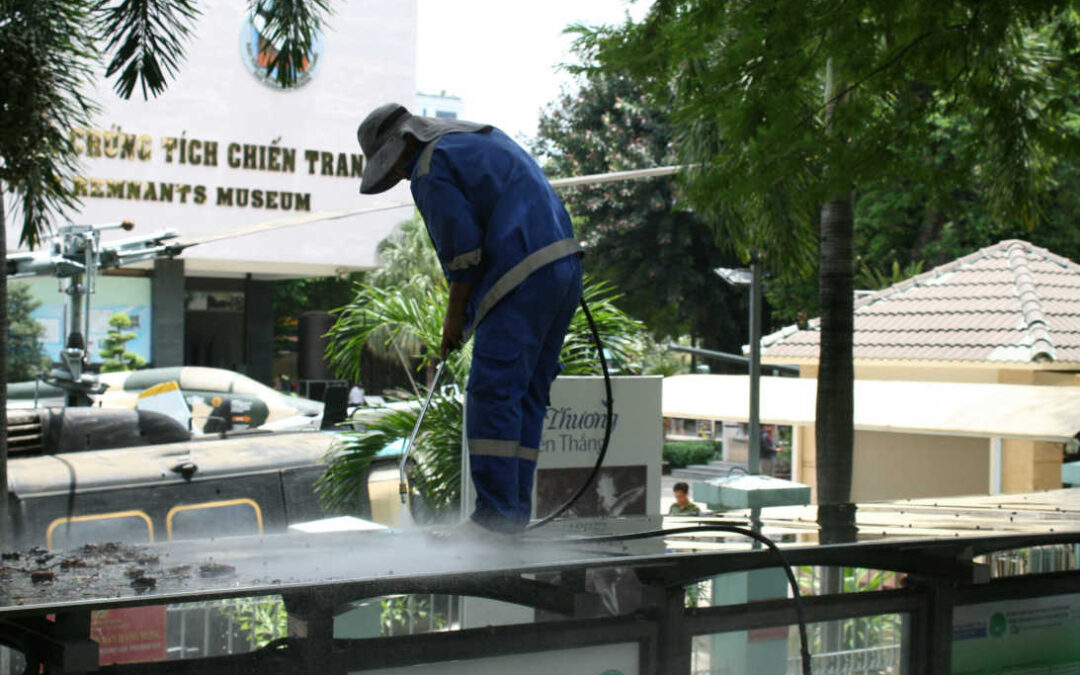What is Heavy Build-Up Cleaning?
Over time, every facility accumulates layers of grease, grime, and dust that go beyond what a mop, cloth, or vacuum can handle. Heavy build-up cleaning is the specialized process of breaking down and removing these stubborn deposits.
Unlike standard janitorial work, which is designed for day-to-day appearances, heavy build-up cleaning restores surfaces to a safe and sanitary condition. It deals with hardened residues that:
- Resist general-purpose cleaning products.
- Linger in places that are difficult to reach.
- Create risks if ignored for too long.
By targeting these deeper problems, the service ensures compliance, safety, and a cleaner environment for both staff and customers.
Where Build-Up Occurs Most Often
Grime has a way of hiding in plain sight. While polished floors and neat counters may look fine, certain hotspots quietly accumulate residues until they become a problem.
Common locations include:
- Kitchens, where grease build-up gathers around hoods, grills, and fryers.
- Warehouse rafters and beams, where dust collects undisturbed.
- Behind and beneath equipment, where moisture and debris are trapped.
- Restrooms, especially grout lines and drain covers.
These areas are usually difficult to access, which means they’re often skipped during routine cleaning. Left unchecked, they become breeding grounds for bacteria, odors, and even safety hazards.
Why Standard Cleaning Fails
Daily cleaning routines are valuable for keeping spaces presentable, but they’re not equipped for long-term buildup. Mopping, for example, often pushes dirty water deeper into grout instead of removing it. Wiping surfaces clears away spills but doesn’t touch the residues behind or underneath equipment.
Even strong cleaning agents are usually designed for light soils, not hardened grime. This is why a facility may appear tidy yet still suffer from lingering odors, sticky floors, or stained surfaces. It’s simply that janitorial cleaning has a different purpose. When deposits harden, professional intervention becomes necessary.
Risks of Ignoring Heavy Build-Up
Allowing build-up to persist doesn’t just affect appearance, it creates real risks that threaten both operations and reputation:
- Slip hazards from grease films on floors.
- Pest attraction, as residues provide food sources.
- Fire risks from combustible grease and dust layers.
- Inspection failures, which can lead to fines or even shutdowns.
The CDC highlights that dust and residue can also worsen indoor air quality, carrying allergens and bacteria through the air. What seems like a cosmetic issue quickly becomes a safety and health problem.
Professional Methods That Work
Breaking down hardened grime requires tools and approaches tailored to the environment. Professional cleaning teams use methods such as:
- Degreasing treatments for kitchen hoods, floors, and walls.
- HEPA-filtered vacuums to capture dust without redistribution.
- Steam or pressure cleaning to sanitize grout and drain areas.
- Containment systems to protect merchandise and prevent disruption.
For kitchens in particular, technicians know how to remove heavy grease build up in areas where traditional products and equipment fail. The right methods protect both food safety and compliance.
Industry-Specific Examples
The challenges of build-up look different depending on the facility:
In restaurants, grease naturally accumulates under fryers and along ventilation hoods, creating odors and fire hazards. Retail stores with open-ceiling designs collect layers of dust on ductwork, lighting, and signage, areas customers can see as soon as they look up. Meanwhile, warehouses face residue from forklifts, packaging dust, and machinery oils that leave grime across rafters and equipment.
Though the environments differ, the underlying issue is the same: once soils are hardened, only a heavy build-up removal service can restore surfaces to a safe and hygienic state.
Frequency and Prevention
No two facilities are alike, but some guidelines can help set expectations:
- Food service environments: Monthly checks, with quarterly full deep cleans.
- Retail and commercial spaces: Semi-annual service to manage dust and residue.
- Warehouses and industrial sites: Annual cleaning cycles, with targeted touch-ups as needed.
Preventive scheduling is far less disruptive than emergency cleanings triggered by inspections or customer complaints. By planning ahead, managers save both money and stress.
Signs It’s Time for Heavy Build-Up Removal
Facilities often reveal clues when grime has reached a tipping point. Watch for:
- Persistent odors that linger even after cleaning.
- Stained grout or dark lines that don’t respond to mopping.
- Sticky films on floors or walls that feel greasy to the touch.
- Failed audits or inspections linked to cleanliness issues.
Any one of these signs is enough to warrant a professional assessment before the problem worsens.
Building a Preventive Program
The best solution isn’t one-off intervention. It’s consistency. By combining daily janitorial routines with scheduled heavy build-up cleaning, facilities can:
- Keep operations audit-ready year-round.
- Extend the life of surfaces and equipment.
- Avoid costly emergency service calls.
Organizations such as Work Clean emphasize that treating cleaning as a preventive measure—not just a reaction—creates safer, healthier environments. When paired with specialized services like Steam Cleaning and broader Commercial Cleaning Programs, facilities stay ahead of risks while protecting their reputation.
Book a Heavy Build-Up Cleaning Assessment
Heavy build-up is more than just an aesthetic concern. It’s a safety risk, a compliance issue, and a potential brand problem. Tackling it early with professional methods ensures that facilities remain safe, sanitary, and customer-ready.
👉 Book a Heavy Build-Up Cleaning Assessment today and safeguard your facility against hidden hazards.



Recent Comments